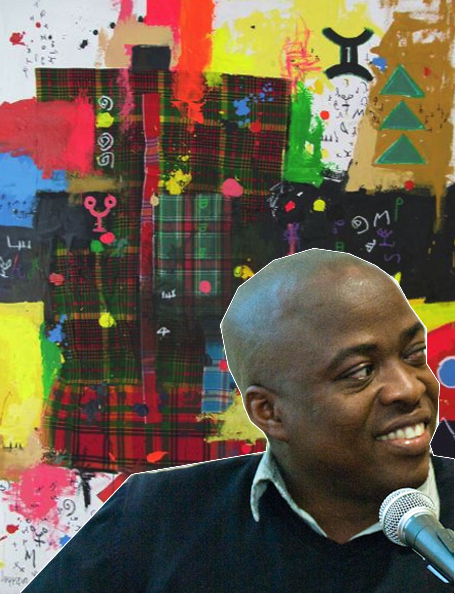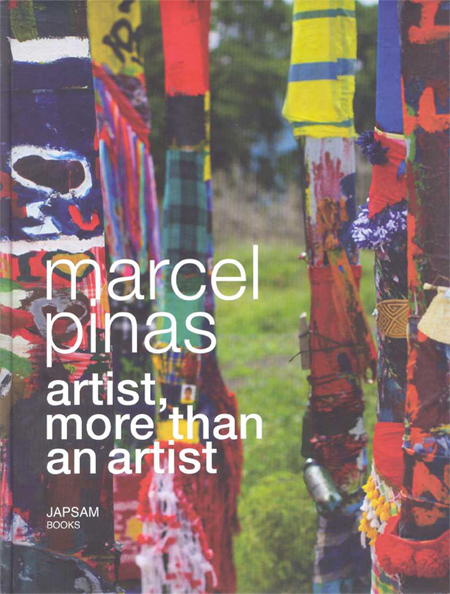 Marcel Pinas
Marcel Pinas Marcel Pinas
Marcel Pinas (1971) is an artist who was born in Pelgrimkondre, in the district of Marowijne in northeast Suriname, close to Moengo and Moiwana, two places central in the conflict in the Interior War. Nothing remains of his native village. In 2010 he founded the Tembe Art Studio to share his experience and knowledge with the Surinamese community, starting in Moengo, in his birth district Marowijne, followed by the opening of the Contemporary Art Museum Moengo (Camm) in July 2011. In 2010, he was panelist for the discussion The View of Self – Blak on Blak to present his project Wakaman with Gillion Grantsaan. In this way Pinas wants to motivate and stimulate especially the youth, to develop their talents. In 2011 his monograph Marcel Pinas, Artist more than an artist was published by Jap Sam Books.
As the theme for his art Marcel Pinas has chosen the Maroon culture from which he stems. Kibri a kulturu or preserve our culture is the motto that drives him. Pinas wants his work to encourage people to preserve the knowledge that still remains, to record it in order to promote the appreciation of the skills they have. This applies in particular to the cultural heritage of his own Surinamese N’dyuka Maroon community, also know as the Aucaners. In addition to his characteristic usage of Afaka symbols, Pinas also uses Maroon culture objects such as parts of a dug-out, pieces of paris paddles, small matapis (elongated woven rattan tubes used to squeeze out shredded cassava), pieces of pangi fabric (checked fabric used for loincloth and wraps), papamonis (shells formerly used as currency), kokolampus (oil lamps) and aluminium spoons. As well as mixed technique paintings on canvas, Pinas also produces many installations and large scale works for public places. In 2011 he participated with his installation Kibi Wi Totem at ArtZuid in Amsterdam.
Pinas studied at the Nola Hatterman Art Academy (Suriname) from 1987 to 1990. His work as an artist is defined during his time in Jamaica from 1997 to 1999 at the Edna Manley College of the Visual and Performing Arts, where he is chosen as Top Student for the 1999 Graduation Class. Although the two years (2007-2008) he spend at the Rijksakademie in Amsterdam (Netherlands) does not alter the themes, they do add a new, more universal dimension to his work.
free from Wakaman. Drawing lines – connecting dots, p. 30, 2009- Readtex Art Gallery - Paramaribo, Surinam
- MARCEL PINAS KRIJGT EN NEEMT DE RUIMTE, DOOR ROB PERRÉE (2011)
- RECENSIE EXPOSITIE KIBRI A KULTURU (2009) METROPOLIS M
- SRANAN ART'S BLOG OVER THEMBE ART STUDIO


